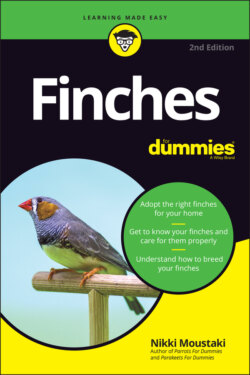Читать книгу Finches For Dummies - Nikki Moustaki - Страница 9
The Life of a Wild Finch
ОглавлениеSome finches are very social by nature. They live and forage in flocks, sometimes numbering into the hundreds. This is why people rarely keep finches alone — with the exception of the canary, who likes company only during breeding season, and otherwise does not prefer a cagemate. Most finches do not do well unless they are in a pair or a flock. Wild finches feed mostly on grass and weed seeds, and eat insects as well, usually during the breeding season, and feed them to their young. They sleep in soft nests at night, even when not breeding. As a small, defenseless prey bird, they rely heavily on their senses and their quickness for survival.
Finches will pair off within a flock. These are generally mating pairs, although not always. Occasionally, two males — or two females — will choose to become companions. Pairings do not always last for life, but while they are together, pair companions stay very close to one another within the flock. They forage together, groom each other, and nest together at night.
Most finches are monogamous, but some, like the orange weaver, keep a harem and will chase off other males who try to invade their territory. Other finches, such as the whydah, are considered parasitic, laying their eggs in other birds’ nests so that those birds can take over incubation and rearing duties. They rely on these other birds the way parasites rely on other animals to survive.
